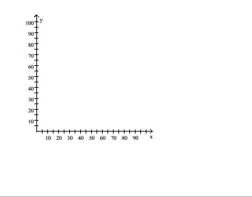Plot and interpret the appropriate scatter diagram.
-The one-day temperatures for 12 world cities along with their latitudes are shown in the table below. Make a
scatter diagram for the data. Describe what happens to the one-day temperatures as the latitude increases. Latitude (degrees)  Temperature (F)°
Temperature (F)°
Definitions:
Global Grassroots
Initiatives or movements that start at the local or community level and spread across borders, focusing on global issues through bottom-up approaches.
Coffee Fund
A colloquial term used to describe a small, informal collection of money among a group of people for the purchase of communal coffee or similar shared resources in an office or team environment.
Free Rider
An individual or entity that benefits from resources, goods, or services without paying for their cost, often leading to issues in public goods provision.
Public Goods Dilemma
A type of social dilemma in which individuals incur the cost to contribute to a collective resource, though they may never benefit from that resource.
Q5: p(x) = -x - 4<br>A) 1<br>B) 4<br>C)
Q12: Given the functi <span class="ql-formula"
Q14: <span class="ql-formula" data-value="\frac { y ^ {
Q59: <img src="https://d2lvgg3v3hfg70.cloudfront.net/TB7856/.jpg" alt=" A)
Q59: A reflecting telescope contains a mirror shaped
Q75: The volume V of a square-based pyramid
Q110: (-5, -3) <img src="https://d2lvgg3v3hfg70.cloudfront.net/TB7856/.jpg" alt="(-5, -3)
Q115: A rock is dropped from a
Q196: <img src="https://d2lvgg3v3hfg70.cloudfront.net/TB7856/.jpg" alt=" A)
Q260: <img src="https://d2lvgg3v3hfg70.cloudfront.net/TB7856/.jpg" alt=" A) Absolute maximum: